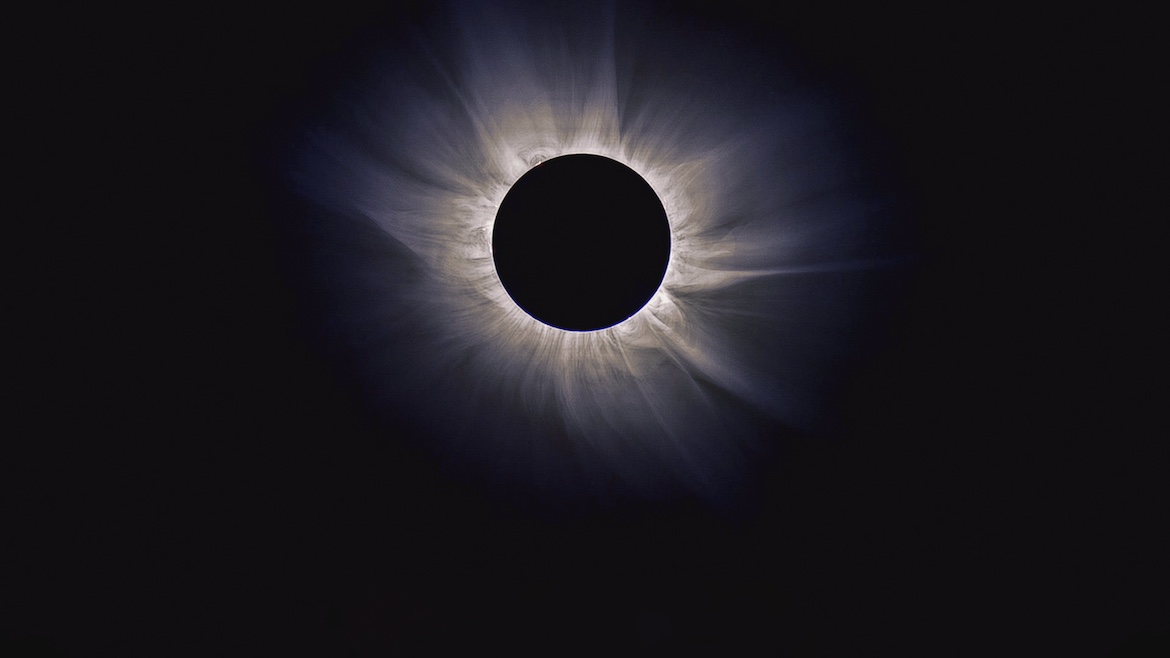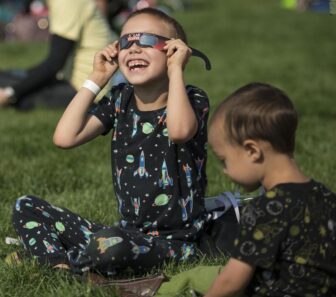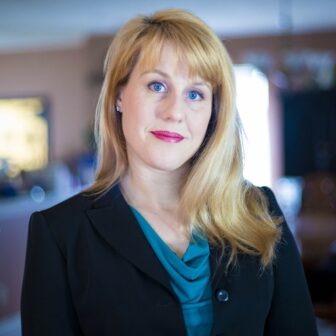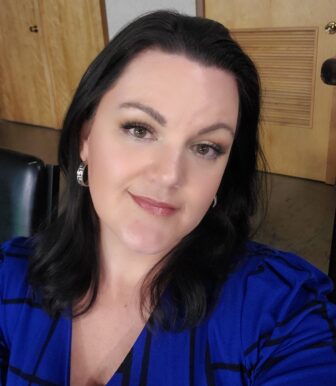‘Nova’ pairs with stations to help viewers experience total solar eclipse

Courtesy Nova
Five days after the PBS premiere of Nova’s “Great American Eclipse,” producers and engagement staff will witness the culmination of their efforts to turn people onto the wonders of astronomy through a rare celestial spectacle, a total solar eclipse.
On April 8, along a path of totality that starts in Mexico, travels northeast across Texas and on up to Maine and Canada, the moon will drift in front of the sun, plunging communities and open landscapes into darkness for anywhere between 1 minute, 46 seconds and 4 minutes, 27 seconds. The eclipse is the last to pass over the United States until 2044.
About 31.6 million people live directly in the path of totality, according to NASA. Another 150 million people live within 200 miles of it. Those within this path will be able to watch the moon cross the path of the sun, block out its light and reveal the sun’s outer atmosphere or corona. Outside of the path of totality, observers will see a partial eclipse.
Public media stations in at least 5 states and 10 cities in or near the path of totality will mark the eclipse with in-person events or special coverage, according to Nova. PBS Arkansas is planning a live stream from four locations across the state. WCNY-FM in Syracuse, N.Y., will broadcast a classical music special as a soundtrack for watching the eclipse. Stations at opposite ends of the path — KLRN in San Antonio and WPBS in Watertown, N.Y. — will host viewing parties that bring people of all ages together to learn about and observe the eclipse. Both events build on the Nova documentary and educational resources to offer unique learning experiences for their communities.
‘It’s unlike anything else’
The April 3 PBS debut of “Great American Eclipse” will do its part to get viewers excited and ready for a total solar eclipse. The documentary and clips taken from it are key elements of the education and engagement plan that launches into action this week.
The documentary explains the science behind solar eclipses and how different cultures have celebrated these celestial events throughout history. It also explores what scientists hope to discover about the sun during this eclipse and advises viewers how to watch it safely.

“These spectacular cosmic events and experiences are fairly rare,” said Julia Cort, Nova’s co-executive producer. “It’s an amazing way for people to feel connected to the solar system and the cosmos. We here at Nova want to engage people in science and in the universe. We want to tap into the curiosity that is innate in all of us.”
“This is an event that can bring an entire country together and show people the world in a way that only science can,” Cort added.
“You want people to go outside and actually watch the eclipse themselves,” Cort said. “Because watching video is just not as exciting as seeing it in person. It’s unlike anything else to experience.”
To mark the eclipse, Nova has distributed tens of thousands of safety glasses to stations and educators. Each pair of glasses is emblazoned with messaging that celebrates 2024 as the show’s 50th anniversary on PBS.
In San Antonio, the largest U.S. city in the path of totality, KLRN is hosting an eclipse viewing party at Nelson Wolff Municipal Stadium, home to Minor League Baseball’s San Antonio Missions.
“Our goal is to bring students, teachers, families and the community to this area, where they’ll be able to view the eclipse safely, thanks to the glasses and eclipse information provided,” said Rachel Salinas, KLRN director of school services.
The total eclipse on April 8 will be the first to cross over San Antonio since 1397.

A total eclipse traveled across the U.S. August 21, 2017, but this month’s solar spectacle is more noteworthy because the moon will be closer to Earth, according to NASA. As a result, the path of totality will be between 108 and 122 miles wide. (That’s almost twice the width of the 2017 eclipse.) This eclipse will pass over more densely populated areas of the country, and in most locations total eclipse will be visible for longer.
In San Antonio, KLRN’s viewing party begins at 10 a.m. CT and will feature talks by local astronomy educators and a newscaster. The partial eclipse will commence around 12:14 p.m. Totality will become visible at 1:34 p.m. and last around two minutes.
Though public events are being held across the city, the stadium is one of the best observation points because it is “more centrally located within the path of totality,” Salinas said.

“Right now our main focus is reaching schools that are outside the path of totality,” Salinas said. As of March 20, local schools had registered 1,700 students for the viewing party. “Hopefully we can get folks to come on out on a field trip to see it.” KLRN and its partners expect attendance of 6,500.
Partners on the watch party include nine organizations that participate in the Alamo STEM Ecosystem, a county-wide effort to improve science education, especially for students from demographic groups who are underrepresented in science professions. The Scobee Education Center at San Antonio College, which operates a planetarium, and the NASA Community Anchor Teams II grant program are supporting the event.
In addition to screening clips from “Great American Eclipse” at the viewing party, KLRN will distribute Nova’s safety glasses.
The glasses are part of a critical safety message about viewing the eclipse: Don’t do it without protecting your eyes. The risk of injury comes from how your pupils respond to sudden darkness by expanding to allow more light into the eye. This increases exposure to ultraviolet light that damages the retina.
One reason the eclipse is so enthralling is that it allows observation of the sun’s corona, the “extremely hot plasma that shoots off the sun [and] looks like a crown,” Cort explains. The corona is the focus of many unsolved scientific mysteries, especially the “radiation storms that … could potentially do real damage to our electrical systems and grids.”
‘Total Eclipse of the Park’ in Watertown
After the total solar eclipse traverses from San Antonio nearly 1,850 miles northeast, visitors to Total Eclipse Of The Park in Watertown, N.Y., will observe the totality at 3:22 p.m. ET.
Nova’s team has been assisting WPBS, which serves northern New York State and eastern Ontario, with an event that could attract an estimated 10,000 to 30,000 people, said Cynthia Tyler, event coordinator at WPBS-TV.
WPBS partnered with the city last year to mount the event. Thompson Park, which is about the same size as New York City’s Times Square, is the location for what will be a community fair featuring science experiments and a viewing party.

“We have tourists driving in from the rest of New York State and Canadians are coming down, as we are less than 40 minutes from the border,” Tyler said.” All the hotels and Airbnbs in the region are booked.
The city budgeted $30,000 for the celebration, but has since increased its outlay to $120,000, Tyler said. “They really didn’t know what the budget should have been. They realized it was such a huge, once-in-a-lifetime event, so the additional funding was very enthusiastically approved by the local population.”
City funds will cover the costs of shuttle buses and infrastructural upgrades that will move the huge influx of people in and out of the park safely. “There are schools that are closing and rescheduling their classes to accommodate the event,” Tyler said.
Total Eclipse of the Park begins in the morning with vendor displays and information booths. Attendees will be able to observe or participate in science experiments, such as how to make a pin-hole camera to view the eclipse. The device can be made from paper or a cardboard box.
WPBS will bring PBS Kids mascots like Clifford the Big Red Dog to the event to greet families. And station staff will distribute scientific reading materials for kids provided by WXXI in Rochester, goody-bags and Nova safety glasses.
In the WPBS booth, Nova clips about the history of the eclipse, why it happens and safety protocols for looking at the sun will be shown throughout the day.
Despite all of the planning for the total solar eclipse, there is one uncontrollable variable that will affect the success of stations’ events — the weather.
Cort and the Nova crew will be in Kerrville, Texas, right in the middle of the path of totality and 65 miles northwest of San Antonio. They’ll be filming the eclipse for social media posts and digital videos. “Statistically that is the best chance for clear skies on that date,” Cort said.
Even if clouds do cover the eclipse in Watertown, Tyler is confident it won’t spoil the fun. Cloudy skies are a “very real possibility” and “a trepidation,” she said.





